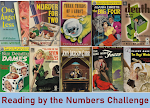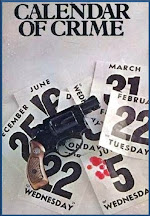 This is a
decent little mystery reference book with some interesting information.
However, I am a little perplexed by a supposed mystery expert who gets
several fairly common (to mystery readers) facts wrong. Hercule Poirot
and Nero Wolfe are private investigators--they get paid for most of
their investigations--therefore, they are not amateurs. Sherlock Holmes made his startling return from the dead in "The Empty House" not The Hound of the Baskervilles. Pam & Jerry North (of the Lockridge mystery series) had several cats over the long series of books--in addition to Martini (which according to Mr. Pearsall is the only cat), there are Gin, Sherry, Ruffy, Pete, Toughy, Stilts and Shadow. Lord Peter Wimsey was a Major in World War I, not a Captain. I could go on. It makes it a bit difficult to take the author's word for it on the information that is new to me, when he is mistaken on several counts throughout the book. There is plenty of correct information, though, so I'll take it in stride.
This is a
decent little mystery reference book with some interesting information.
However, I am a little perplexed by a supposed mystery expert who gets
several fairly common (to mystery readers) facts wrong. Hercule Poirot
and Nero Wolfe are private investigators--they get paid for most of
their investigations--therefore, they are not amateurs. Sherlock Holmes made his startling return from the dead in "The Empty House" not The Hound of the Baskervilles. Pam & Jerry North (of the Lockridge mystery series) had several cats over the long series of books--in addition to Martini (which according to Mr. Pearsall is the only cat), there are Gin, Sherry, Ruffy, Pete, Toughy, Stilts and Shadow. Lord Peter Wimsey was a Major in World War I, not a Captain. I could go on. It makes it a bit difficult to take the author's word for it on the information that is new to me, when he is mistaken on several counts throughout the book. There is plenty of correct information, though, so I'll take it in stride. It is an interesting read and there is a good smattering of quotes from some of the big name books. (I love quotes!). Two and 3/4 stars--rounded to three on Goodreads.













































